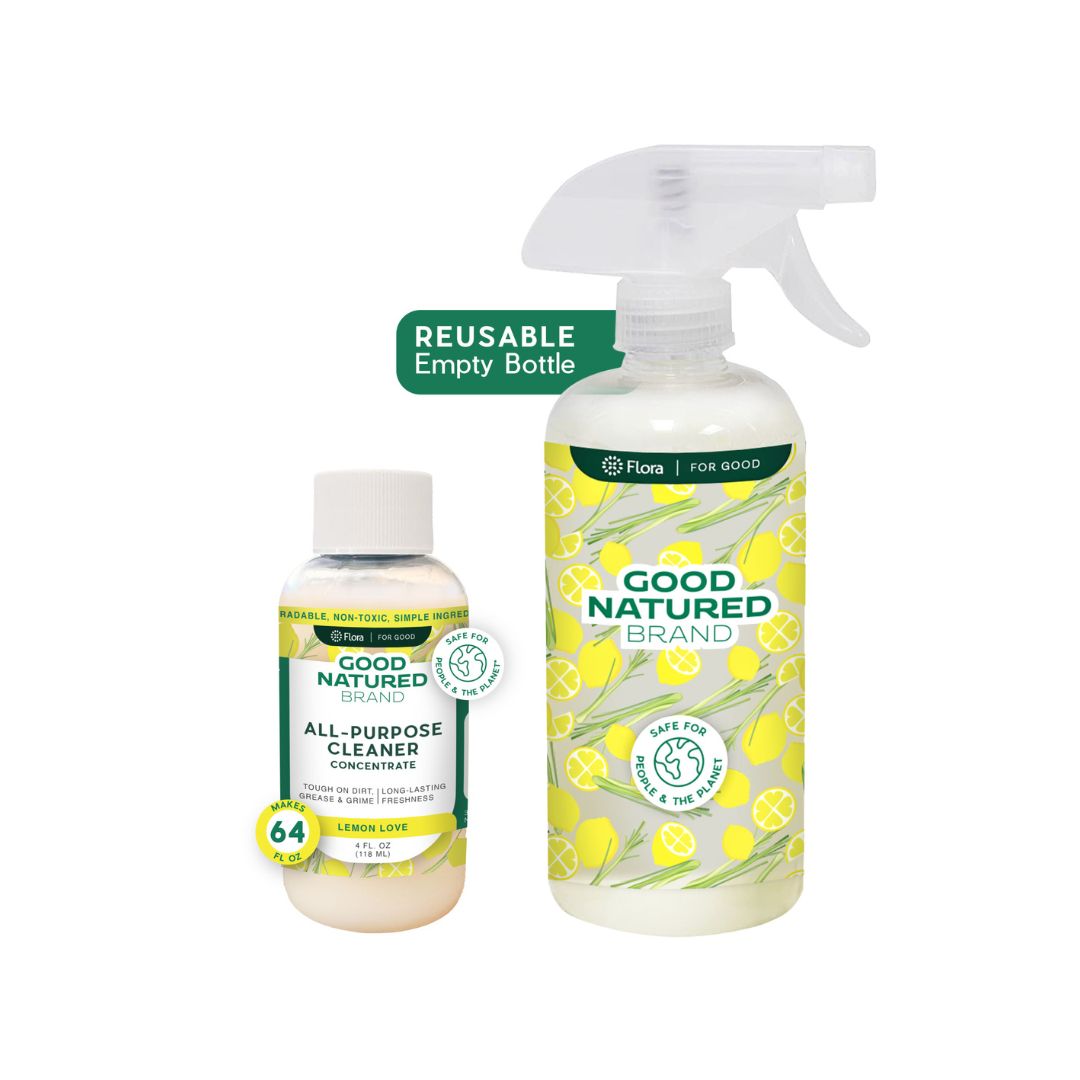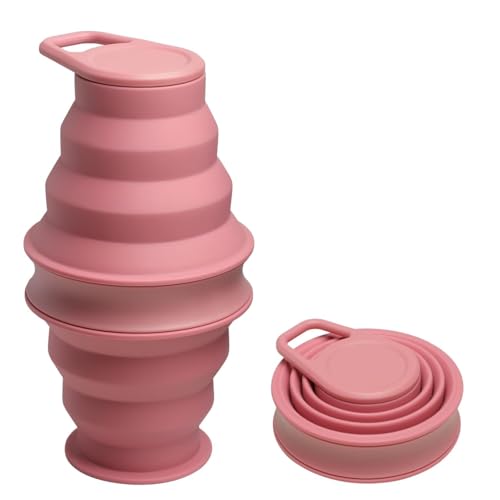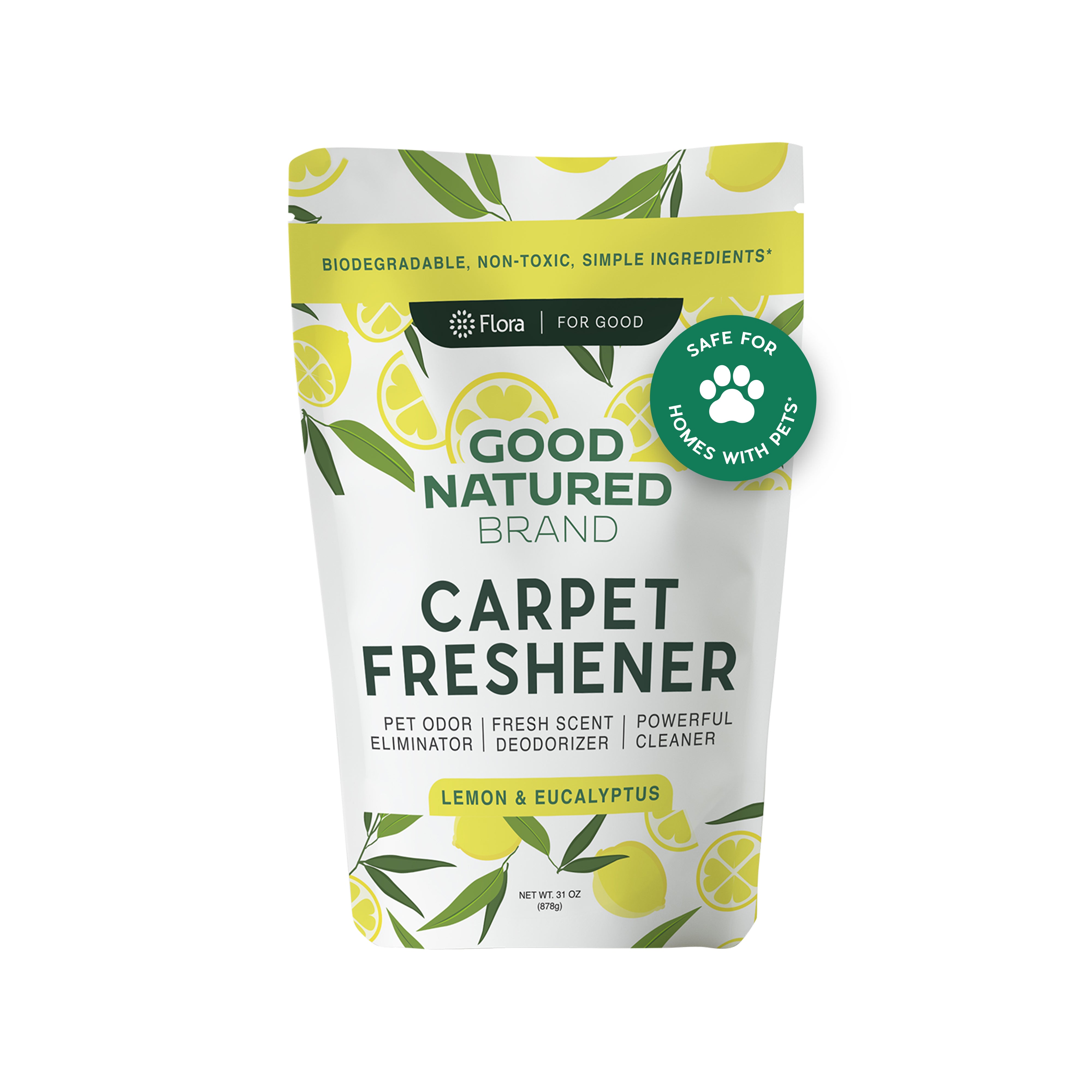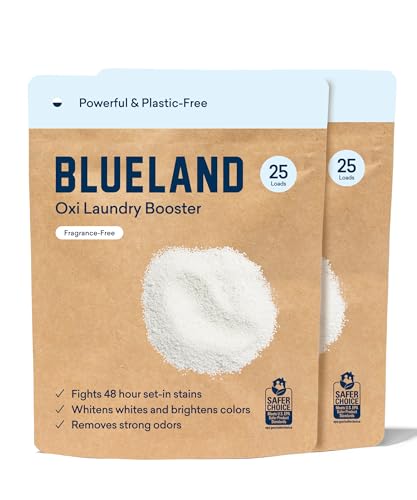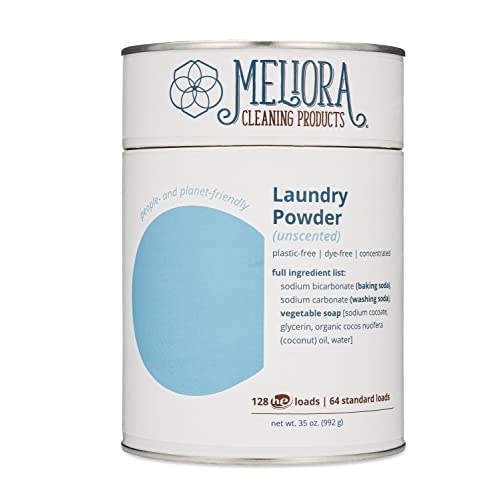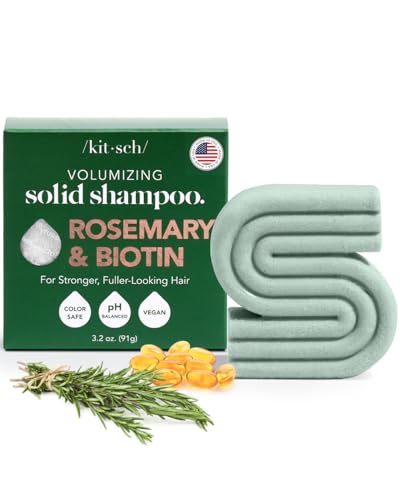
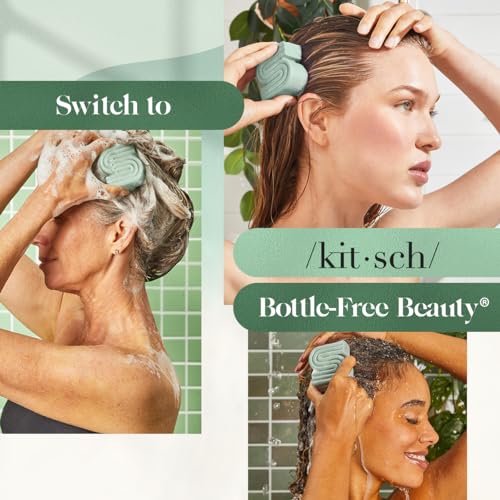
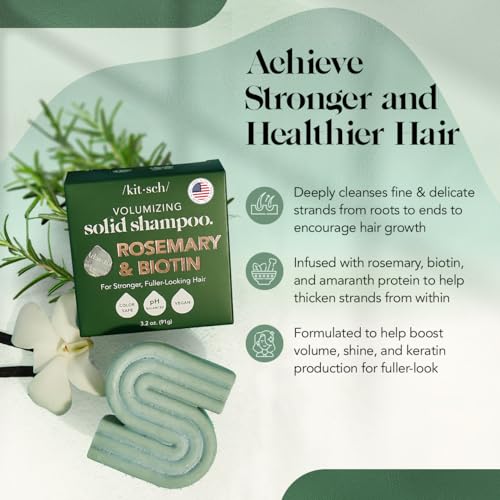
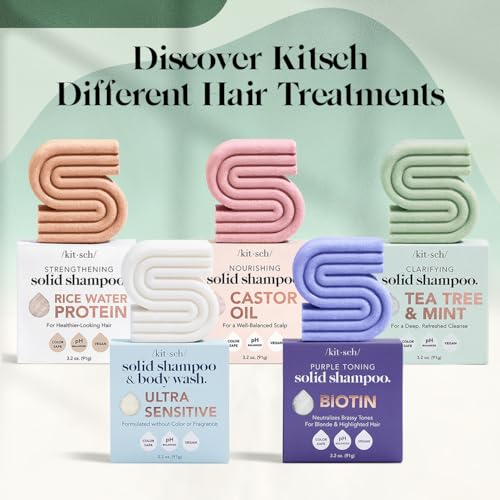
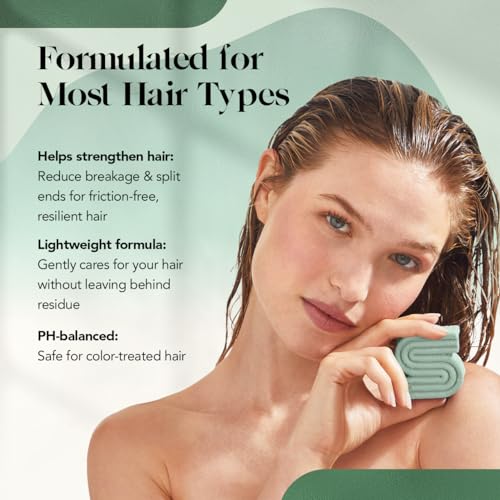
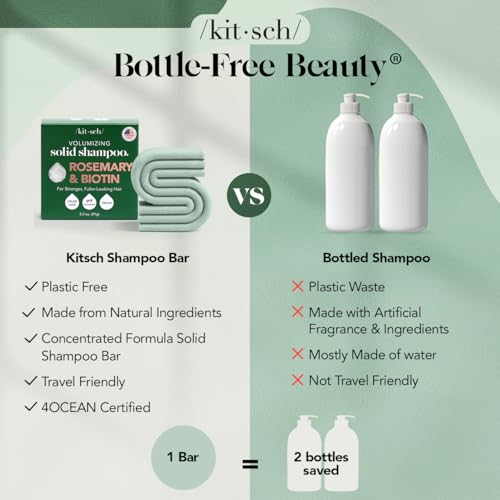
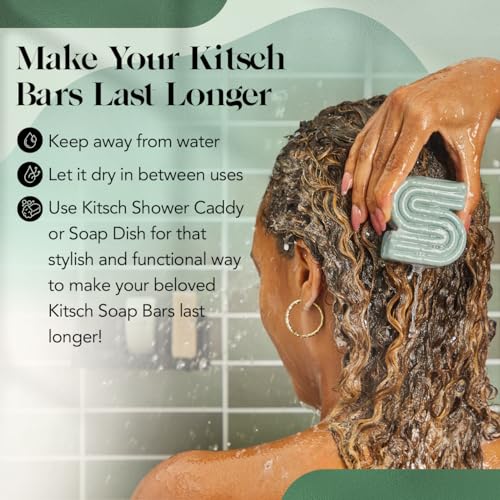
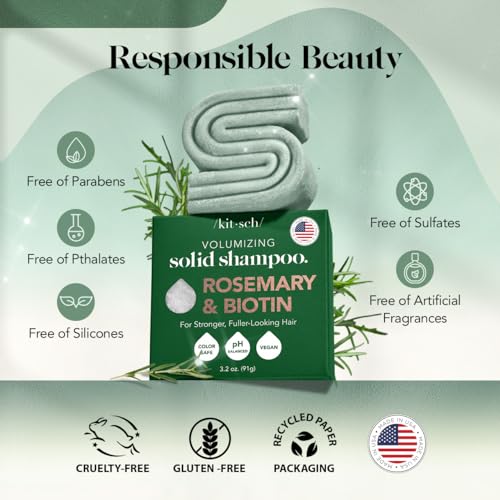
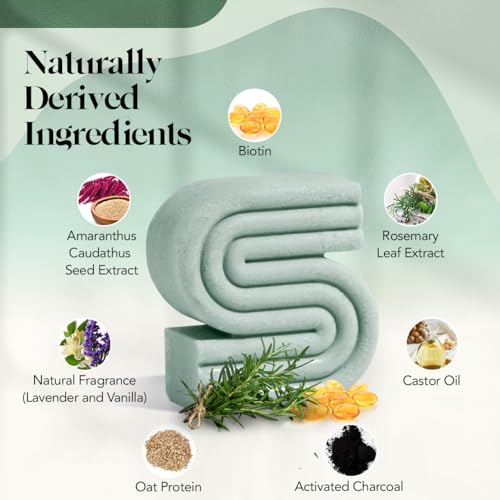
Kitsch Rosemary & Biotin Shampoo Bar - Boosts Volume & Shine, Vegan, Lavender Vanilla Scent


Chromium Oxide Greens
High RiskChromium oxide greens (Cr2O3) is a mineral pigment used primarily in cosmetics and personal care products for its coloring properties. It is known for its stable, non-toxic nature, making it suitable for a variety of formulations.
Sustai Insights
Chromium oxide greens serves as an effective coloring agent, providing stability and durability in products. However, concerns include potential developmental and reproductive toxicity, alongside enhanced skin absorption. Regulatory restrictions exist due to these risks, categorizing it as high risk overall. Safe usage practices are essential, and alternatives like iron oxides may be considered to mitigate risks.
Ultramarines
High RiskUltramarine (CI 77007) is a mineral-based colorant primarily used in cosmetics and personal care products. It is known for providing vibrant blue hues and is derived from natural sources, making it popular in a variety of formulations.
Sustai Insights
Ultramarine offers functional benefits as a colorant enhancing product aesthetics. Although it is deemed low risk for cancer, allergies, and reproductive toxicity, it has high use restrictions due to regulatory concerns. Potential environmental risks include being a pollutant, while its overall risk level is assessed as high. Safe usage practices should be followed, and alternatives like plant-based colorants may be considered for more sustainable options.
Carbon
High RiskCarbon is an amorphous form of elemental carbon commonly used in various products. It serves multiple functions, including acting as a pigment, filler, or adsorbent, depending on the formulation. Its versatile applications span across personal care, cosmetics, and other industries.
Sustai Insights
Carbon has functional benefits such as enhancing product texture and stability. It is generally considered low in health risks, with minimal concerns regarding carcinogenicity, allergies, and reproductive toxicity. However, its use is subject to high restrictions due to regulatory concerns about safety and environmental impact, including potential pollution and bioaccumulation. The overall risk associated with carbon is high, necessitating careful consideration in product use. Alternatives like plant-based pigments or biodegradable fillers may offer safer options.
Citric Acid
Medium RiskCitric acid is an alpha hydroxy acid used in personal care products primarily for its role as a pH adjuster and natural preservative. It occurs naturally in citrus fruits and is commonly utilized in various formulations for its chelating properties and mild exfoliation benefits.
Sustai Insights
Citric acid offers functional benefits as an effective preservative and pH stabilizer, contributing to product longevity and stability. It is biodegradable and derived from renewable sources. Health risks are low, with minimal concerns regarding carcinogenicity, allergies, and reproductive toxicity. However, moderate use restrictions exist due to potential irritation at high concentrations. Environmental risks are limited, as citric acid is not known to accumulate in ecosystems. Regulatory agencies have no significant advisories against its use. Overall, it is assessed as a medium-risk ingredient, with safe usage practices recommended and alternatives available.
Rosmarinus Officinalis (Rosemary) Leaf Extract
Medium RiskRosemary leaf extract is produced from the leaves of the Rosmarinus officinalis plant. It is commonly used in cosmetic formulations for its potential antioxidant properties and fragrance. The extract may also contribute to the preservation of products due to its antimicrobial characteristics.
Sustai Insights
Rosemary leaf extract offers functional benefits such as antioxidant and antimicrobial properties, which can enhance product stability and shelf-life. It is generally considered low risk for carcinogenicity and reproductive toxicity, but it carries a moderate potential for allergic reactions. Environmentally, it poses low risk with no significant pollutant or bioaccumulation concerns. Regulatory bodies have not placed significant restrictions on its use, although some verified products cannot contain certain concentrations. Overall, the ingredient's risk level is medium, necessitating careful usage practices to mitigate allergic responses.
Guar Hydroxypropyltrimonium Chloride
Low RiskGuar hydroxypropyltrimonium chloride is a quaternary ammonium compound derived from guar gum, primarily used as a conditioning agent in cosmetic products. It enhances the texture and feel of hair and skin formulations, providing moisture retention and improved manageability.
Sustai Insights
This ingredient offers functional benefits as a conditioning agent, improving the texture and moisture retention in formulations. It is considered low risk regarding health effects, with minimal concerns for carcinogenicity, allergies, or reproductive toxicity. Environmental risks are also low, as it does not accumulate significantly in ecosystems. Regulatory bodies have not imposed significant restrictions. Safe usage practices should be followed, but overall, this ingredient is assessed as low risk, with no immediate concerns regarding alternatives.
Hydrogenated Castor Oil
Low RiskHydrogenated castor oil is produced by hydrogenating castor oil, resulting in a thick, waxy substance. It functions primarily as an emollient and thickening agent in various cosmetic and personal care products, enhancing texture and stability.
Sustai Insights
Hydrogenated castor oil serves as an effective emollient and thickener, contributing to product stability and texture. It is generally regarded as low risk for health impacts, with low concerns for carcinogenicity, allergies, and reproductive toxicity. Environmentally, it presents low pollutant potential and does not bioaccumulate. Regulatory bodies impose low restrictions, making it a compliant choice in formulations. Safe usage practices should be followed, and while no significant alternatives are highlighted, its overall risk level remains low.
Sodium Cocoyl Isethionate
Low RiskSodium cocoyl isethionate is a surfactant derived from coconut oil, commonly used in cosmetic formulations. It functions as a cleansing and foaming agent, contributing to the texture and effectiveness of personal care products such as shampoos and body washes. It helps to remove dirt and oils from the skin and hair.
Sustai Insights
Sodium cocoyl isethionate offers functional benefits as a gentle surfactant that effectively cleanses without stripping moisture. It is biodegradable and derived from renewable sources, enhancing its sustainability profile. Health risks are low, with minimal potential for irritation or allergies noted. Regulatory bodies have not imposed significant restrictions, indicating a favorable risk assessment overall. Usage should be within recommended concentrations to maintain safety. Alternatives include milder surfactants like decyl glucoside for those seeking gentler options. Overall, the ingredient is assessed to have a low risk.
Biotin
Low RiskBiotin, also known as vitamin B7, is a water-soluble vitamin that plays a crucial role in the metabolism of carbohydrates, fats, and proteins. It is commonly used in dietary supplements and cosmetic products to support healthy hair, skin, and nails, due to its involvement in keratin synthesis.
Sustai Insights
Biotin is recognized for its functional benefits, particularly in promoting hair and skin health. It is generally considered safe, with low concerns regarding carcinogenicity, allergenic potential, and reproductive toxicity. Regulatory bodies such as the FDA have no significant restrictions on its use, and it is not associated with substantial environmental risks. Overall, biotin is assessed to be low risk, making it a viable ingredient in various formulations. Safe usage practices include adhering to recommended dosages, and alternatives may be considered for those seeking plant-based or vegan options.
Sodium Methyl Cocoyl Taurate
Low RiskSodium methyl cocoyl taurate is a sodium salt derived from coconut fatty acids, primarily used as a mild surfactant and foaming agent in personal care products. It helps to cleanse and stabilize formulations, contributing to improved texture and performance.
Sustai Insights
Sodium methyl cocoyl taurate is recognized for its effective surfactant properties, providing gentle cleansing and foam production in formulations. It is considered low risk for health concerns such as carcinogenicity and allergenic potential, with minimal irritation noted. Environmentally, it poses low hazards with no significant bioaccumulation or pollution risks. Regulatory bodies, including ECHA, indicate no current restrictions. Overall, it presents a low risk profile, making it a viable choice in personal care applications. Safe usage practices are recommended, and alternatives may include other mild surfactants.
Guar Hydroxypropyltrimonium Chloride
Low RiskGuar hydroxypropyltrimonium chloride is a quaternary ammonium compound derived from guar gum, primarily used as a conditioning agent in cosmetic products. It enhances the texture and feel of hair and skin formulations, providing moisture retention and improved manageability.
Sustai Insights
This ingredient offers functional benefits as a conditioning agent, improving the texture and moisture retention in formulations. It is considered low risk regarding health effects, with minimal concerns for carcinogenicity, allergies, or reproductive toxicity. Environmental risks are also low, as it does not accumulate significantly in ecosystems. Regulatory bodies have not imposed significant restrictions. Safe usage practices should be followed, but overall, this ingredient is assessed as low risk, with no immediate concerns regarding alternatives.
Hydrogenated Castor Oil
Low RiskHydrogenated castor oil is produced by hydrogenating castor oil, resulting in a thick, waxy substance. It functions primarily as an emollient and thickening agent in various cosmetic and personal care products, enhancing texture and stability.
Sustai Insights
Hydrogenated castor oil serves as an effective emollient and thickener, contributing to product stability and texture. It is generally regarded as low risk for health impacts, with low concerns for carcinogenicity, allergies, and reproductive toxicity. Environmentally, it presents low pollutant potential and does not bioaccumulate. Regulatory bodies impose low restrictions, making it a compliant choice in formulations. Safe usage practices should be followed, and while no significant alternatives are highlighted, its overall risk level remains low.
Chromium Oxide Greens
High RiskChromium oxide greens (Cr2O3) is a mineral pigment used primarily in cosmetics and personal care products for its coloring properties. It is known for its stable, non-toxic nature, making it suitable for a variety of formulations.
Sustai Insights
Chromium oxide greens serves as an effective coloring agent, providing stability and durability in products. However, concerns include potential developmental and reproductive toxicity, alongside enhanced skin absorption. Regulatory restrictions exist due to these risks, categorizing it as high risk overall. Safe usage practices are essential, and alternatives like iron oxides may be considered to mitigate risks.
Citric Acid
Medium RiskCitric acid is an alpha hydroxy acid used in personal care products primarily for its role as a pH adjuster and natural preservative. It occurs naturally in citrus fruits and is commonly utilized in various formulations for its chelating properties and mild exfoliation benefits.
Sustai Insights
Citric acid offers functional benefits as an effective preservative and pH stabilizer, contributing to product longevity and stability. It is biodegradable and derived from renewable sources. Health risks are low, with minimal concerns regarding carcinogenicity, allergies, and reproductive toxicity. However, moderate use restrictions exist due to potential irritation at high concentrations. Environmental risks are limited, as citric acid is not known to accumulate in ecosystems. Regulatory agencies have no significant advisories against its use. Overall, it is assessed as a medium-risk ingredient, with safe usage practices recommended and alternatives available.
Rosmarinus Officinalis (Rosemary) Leaf Extract
Medium RiskRosemary leaf extract is produced from the leaves of the Rosmarinus officinalis plant. It is commonly used in cosmetic formulations for its potential antioxidant properties and fragrance. The extract may also contribute to the preservation of products due to its antimicrobial characteristics.
Sustai Insights
Rosemary leaf extract offers functional benefits such as antioxidant and antimicrobial properties, which can enhance product stability and shelf-life. It is generally considered low risk for carcinogenicity and reproductive toxicity, but it carries a moderate potential for allergic reactions. Environmentally, it poses low risk with no significant pollutant or bioaccumulation concerns. Regulatory bodies have not placed significant restrictions on its use, although some verified products cannot contain certain concentrations. Overall, the ingredient's risk level is medium, necessitating careful usage practices to mitigate allergic responses.
Sodium Cocoyl Isethionate
Low RiskSodium cocoyl isethionate is a surfactant derived from coconut oil, commonly used in cosmetic formulations. It functions as a cleansing and foaming agent, contributing to the texture and effectiveness of personal care products such as shampoos and body washes. It helps to remove dirt and oils from the skin and hair.
Sustai Insights
Sodium cocoyl isethionate offers functional benefits as a gentle surfactant that effectively cleanses without stripping moisture. It is biodegradable and derived from renewable sources, enhancing its sustainability profile. Health risks are low, with minimal potential for irritation or allergies noted. Regulatory bodies have not imposed significant restrictions, indicating a favorable risk assessment overall. Usage should be within recommended concentrations to maintain safety. Alternatives include milder surfactants like decyl glucoside for those seeking gentler options. Overall, the ingredient is assessed to have a low risk.
Biotin
Low RiskBiotin, also known as vitamin B7, is a water-soluble vitamin that plays a crucial role in the metabolism of carbohydrates, fats, and proteins. It is commonly used in dietary supplements and cosmetic products to support healthy hair, skin, and nails, due to its involvement in keratin synthesis.
Sustai Insights
Biotin is recognized for its functional benefits, particularly in promoting hair and skin health. It is generally considered safe, with low concerns regarding carcinogenicity, allergenic potential, and reproductive toxicity. Regulatory bodies such as the FDA have no significant restrictions on its use, and it is not associated with substantial environmental risks. Overall, biotin is assessed to be low risk, making it a viable ingredient in various formulations. Safe usage practices include adhering to recommended dosages, and alternatives may be considered for those seeking plant-based or vegan options.
Ultramarines
High RiskUltramarine (CI 77007) is a mineral-based colorant primarily used in cosmetics and personal care products. It is known for providing vibrant blue hues and is derived from natural sources, making it popular in a variety of formulations.
Sustai Insights
Ultramarine offers functional benefits as a colorant enhancing product aesthetics. Although it is deemed low risk for cancer, allergies, and reproductive toxicity, it has high use restrictions due to regulatory concerns. Potential environmental risks include being a pollutant, while its overall risk level is assessed as high. Safe usage practices should be followed, and alternatives like plant-based colorants may be considered for more sustainable options.
Sodium Methyl Cocoyl Taurate
Low RiskSodium methyl cocoyl taurate is a sodium salt derived from coconut fatty acids, primarily used as a mild surfactant and foaming agent in personal care products. It helps to cleanse and stabilize formulations, contributing to improved texture and performance.
Sustai Insights
Sodium methyl cocoyl taurate is recognized for its effective surfactant properties, providing gentle cleansing and foam production in formulations. It is considered low risk for health concerns such as carcinogenicity and allergenic potential, with minimal irritation noted. Environmentally, it poses low hazards with no significant bioaccumulation or pollution risks. Regulatory bodies, including ECHA, indicate no current restrictions. Overall, it presents a low risk profile, making it a viable choice in personal care applications. Safe usage practices are recommended, and alternatives may include other mild surfactants.
Carbon
High RiskCarbon is an amorphous form of elemental carbon commonly used in various products. It serves multiple functions, including acting as a pigment, filler, or adsorbent, depending on the formulation. Its versatile applications span across personal care, cosmetics, and other industries.
Sustai Insights
Carbon has functional benefits such as enhancing product texture and stability. It is generally considered low in health risks, with minimal concerns regarding carcinogenicity, allergies, and reproductive toxicity. However, its use is subject to high restrictions due to regulatory concerns about safety and environmental impact, including potential pollution and bioaccumulation. The overall risk associated with carbon is high, necessitating careful consideration in product use. Alternatives like plant-based pigments or biodegradable fillers may offer safer options.
Discover the Kitsch Rosemary & Biotin Volumizing Natural Shampoo Bar, crafted for all hair types. Infused with nourishing rosemary and biotin, this eco-friendly shampoo bar offers a delightful Lavender & Vanilla scent while promoting hair growth and strengthening.
- Enhanced Volume & Strength: Boosts thickness and shine, promoting healthy keratin production for fuller hair.
- Lightweight Formula: Specifically designed for fine hair, ensures a fresh clean without heavy residue, making styling effortless.
- Pure Ingredients: Formulated with essential oils and bio-based ingredients, free from parabens, sulfates, and artificial fragrances, ensuring a gentle cleanse.
- Sustainable Choice: As a 4ocean Certified Cleanup Partner, every purchase helps remove plastic waste from oceans, supporting a cleaner planet.
- Easy to Use: Simply wet hair, rub the bar to lather, massage into the scalp, and rinse for a revitalizing clean.
Kitsch empowers consumers with transparency and a commitment to sustainability, making hair care a responsible choice.
Subscribe & Save with Sustai
- Best Price Guarantee: Always enjoy the lowest prices on sustainable home essentials.
- No Surprises: We’ll notify you before shipping. No hidden fees, ever.
- You’re in Charge: Change, pause, or cancel your subscription anytime with ease.
- Eco-Friendly Deliveries: Our grouped shipments mean less packaging and lower emissions.
Join us on a sustainable journey. Special offers for a limited time! Prices and promotions may change.
Recommended Products
Discover the Kitsch Rosemary & Biotin Volumizing Natural Shampoo Bar, crafted for all hair types. Infused with nourishing rosemary and biotin, this eco-friendly shampoo bar offers a delightful Lavender & Vanilla scent while promoting hair growth and strengthening.
- Enhanced Volume & Strength: Boosts thickness and shine, promoting healthy keratin production for fuller hair.
- Lightweight Formula: Specifically designed for fine hair, ensures a fresh clean without heavy residue, making styling effortless.
- Pure Ingredients: Formulated with essential oils and bio-based ingredients, free from parabens, sulfates, and artificial fragrances, ensuring a gentle cleanse.
- Sustainable Choice: As a 4ocean Certified Cleanup Partner, every purchase helps remove plastic waste from oceans, supporting a cleaner planet.
- Easy to Use: Simply wet hair, rub the bar to lather, massage into the scalp, and rinse for a revitalizing clean.
Kitsch empowers consumers with transparency and a commitment to sustainability, making hair care a responsible choice.

You can have at most 2 Sustainable Steals products in your cart
Customer Reviews
Customers’ View
Customers generally appreciate the effectiveness and eco-friendly nature of the Kitsch Shampoo Bar. Many users highlight the lightweight formula that cleanses without residue, allowing for a clean and refreshed scalp. Users have noted enhanced volume and shine, with one reviewer mentioning their hair felt "fluffy" after use. The shampoo bar's natural ingredients and absence of plastic packaging resonate well with environmentally conscious consumers. While some users experienced a waxy residue, others found it improved the softness and manageability of their hair. Overall, the product is recognized for its sustainable approach and positive results, aligning well with health-conscious choices.
AI-generated from the text of customer reviewsThis product is rated 4.9 of 5.0 stars.
It has received 69 reviews.
